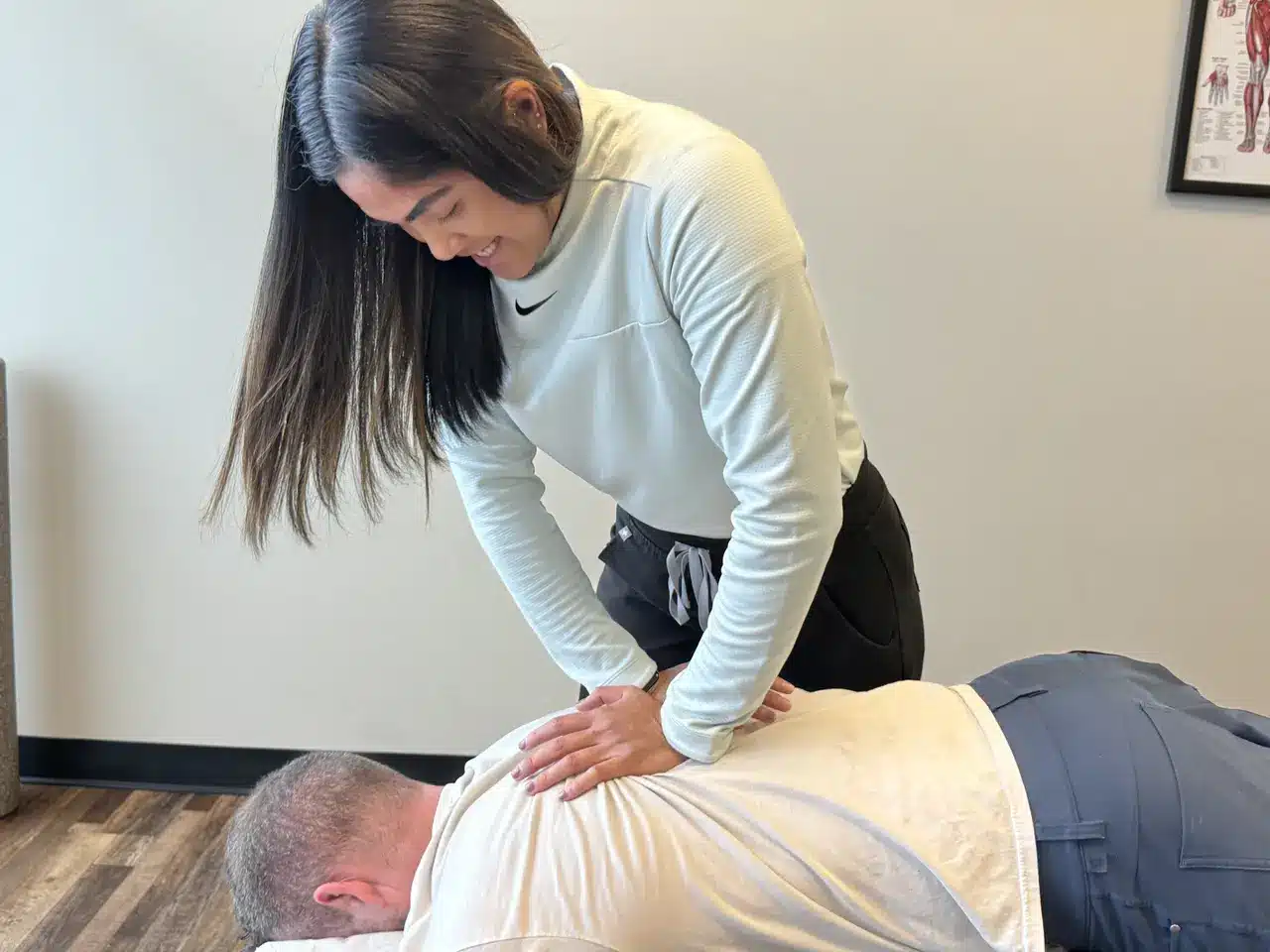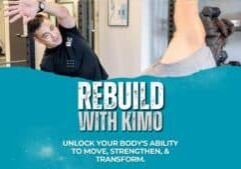Understanding work-related injuries
Work-related injuries can lead to discomfort and impact your ability to work effectively. Understanding the role of chiropractic adjustments in recovery can help you navigate the healing process. Chiropractic adjustments focus on realigning the spine and joints, reducing pain, and improving overall function. It’s a non-invasive approach that aims to restore your body’s natural balance and movement patterns, promoting faster recovery from work-related injuries.
What are chiropractic adjustments?
Chiropractic adjustments, also known as spinal manipulation, involve a chiropractor using their hands or a small instrument to apply a controlled force to a specific joint in your spine. This force helps improve the range and quality of motion in that area. Chiropractic adjustments aim to reduce pain and improve function, and they are often used to treat work-related injuries, such as strains and sprains caused by repetitive movements or heavy lifting. Chiropractic adjustments can also help restore alignment to the spine, which may have been disrupted due to work-related activities.
Benefits of chiropractic adjustments for work-related injuries
Research has shown that chiropractic adjustments can help in the recovery of work-related injuries by reducing pain, improving mobility, and promoting natural healing. Here are some benefits of chiropractic adjustments for work-related injuries:
- Pain Relief: Chiropractic adjustments can reduce pain in the spine, neck, and joints, which are common areas of injury in the workplace.
- Improved Mobility: Adjustments can help restore normal movement and flexibility, allowing you to return to work more quickly.
- Natural Healing: By correcting misalignments and promoting proper spinal function, chiropractic care supports the body’s natural healing process.
Chiropractic adjustments have been shown to be effective in helping individuals recover from work-related injuries and can be a valuable part of the rehabilitation process.
Types of work-related injuries treated by chiropractic adjustments
Chiropractic adjustments can help with various work-related injuries such as strained muscles, back and neck pain, repetitive strain injuries, and ligament sprains. These adjustments aim to realign the body’s musculoskeletal structure, aiding in the recovery process for these types of injuries.
Chiropractic adjustment techniques for work-related injuries
Chiropractic adjustments can help in the recovery of work-related injuries. They involve gently manipulating the spine and joints to alleviate pain and improve mobility, allowing the body to heal naturally. Some common techniques used in chiropractic adjustments for work-related injuries may include spinal manipulation, flexion-distraction technique, and instrument-assisted manipulation. These adjustments can reduce inflammation and relieve pressure on the nervous system, promoting faster healing and a return to work.
The role of chiropractic adjustments in the recovery process
Chiropractic adjustments play a significant role in the recovery process from work-related injuries. These adjustments help in realigning the spine and relieving pressure on the affected areas, promoting natural healing. They can improve mobility, reduce pain, and enhance overall well-being. Additionally, chiropractic care aims to address the root cause of the injury, instead of just masking the symptoms, which can lead to long-term benefits and a faster recovery.
What to expect during chiropractic adjustment sessions
During chiropractic adjustment sessions, the chiropractor will carefully manipulate your spine and joints to help alleviate pain and improve mobility. You can expect the following during your sessions:
- Assessment: The chiropractor will assess your condition and discuss your symptoms and medical history before starting the adjustment.
- Adjustment Techniques: The chiropractor may use manual manipulation, instrument-assisted techniques, or specialized tables to perform the adjustments.
- Sensations: You may feel or hear popping or cracking sounds during the adjustment, which is normal and safe.
- Post-Adjustment Care: The chiropractor may recommend certain exercises, stretches, or lifestyle changes to complement the adjustment and support your recovery.
Precautions and considerations for chiropractic adjustments in work-related injury recovery
To ensure the safety and effectiveness of chiropractic adjustments in work-related injury recovery, it’s crucial to consider the following precautions:
- Before seeking chiropractic care, it’s important to consult with a medical professional to ensure that chiropractic adjustments are suitable for your specific work-related injury.
- When choosing a chiropractor, look for someone who has experience and expertise in treating work-related injuries.
- Communicate openly with your chiropractor about your work-related injury and any concerns you may have.
- Follow your chiropractor’s recommendations for post-adjustment care and any additional exercises or treatments that may be beneficial for your recovery.
- Be mindful of any specific workplace conditions or activities that may have contributed to your injury, and discuss these with your chiropractor for a comprehensive treatment plan.
Integrating chiropractic care with other treatments
Integrating chiropractic care with other treatments can enhance the overall recovery process for work-related injuries. According to the American Chiropractic Association, combining chiropractic adjustments with other therapies such as physical therapy, exercise, and ergonomic modifications can lead to faster rehabilitation and improved pain management. This integrated approach addresses both the symptoms and underlying causes of the injury, promoting a more comprehensive recovery.
Conclusion: The impact of chiropractic adjustments on work-related injury recovery
After reviewing various studies, it has been found that chiropractic adjustments can play a crucial role in the recovery of work-related injuries. The impact of chiropractic care on improving pain, mobility, and overall well-being for individuals with work-related injuries has been significant. Patients who received chiropractic adjustments reported reduced pain levels, increased range of motion, and improved functionality, leading to a speedier recovery process. This suggests that incorporating chiropractic care into the rehabilitation plan for work-related injuries can have a positive impact on the overall recovery and well-being of the affected individuals.
Injury-Proof Your Body: How the REBUILD Program Can Help You Prevent Future Pain and Injury
We all know the frustration of an injury that sidelines us from the activities we love. Whether it’s a nagging backache that keeps you from your favorite sport or a sudden sprain that throws off your daily routine, pain and limitations can significantly impact our quality of life. But what if there was a way…
Read MoreBalancing Act: The Impact of Sports Injury Clinics on Work-Life Balance.
Explore how a sports injury clinic can improve your work-life balance in our blog ‘Balancing Act: The Impact of Sports Injury Clinics on Work-Life Balance’.
Read MoreAre Corrective Exercises Effective in Injury Recovery?
Explore the effectiveness of corrective exercises in injury recovery in our blog ‘Are Corrective Exercises Effective in Injury Recovery?’
Read MoreAdvanced Chiro Rehab Techniques: A Revolution in Pain Management
Discover groundbreaking chiro rehab techniques transforming pain management in our blog ‘Advanced Chiro Rehab Techniques: A Revolution in Pain Management’.
Read MoreUnderstanding the Importance of Spinal Rehab for Back Pain
Discover the crucial role of spinal rehab in managing back pain in our insightful blog ‘Understanding the Importance of Spinal Rehab for Back Pain’.
Read MoreExercises You Can Do at Home after a Visit to the Chiropractic Clinic
Stay active at home with exercises from ‘Exercises You Can Do at Home after a Visit to the Chiropractic Clinic’.
Read More






